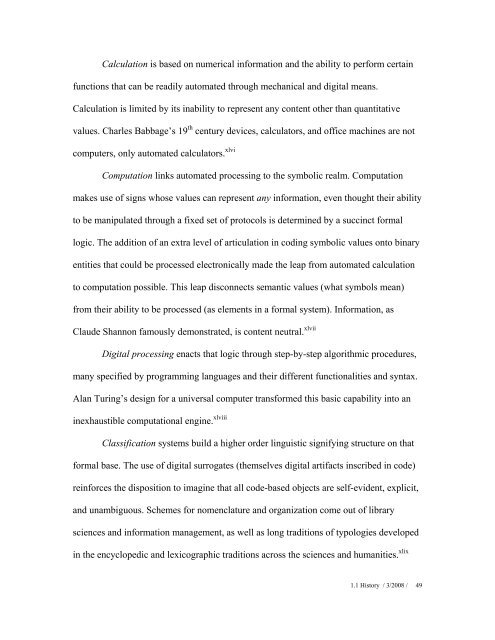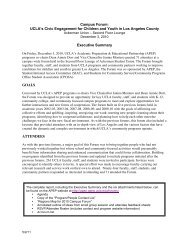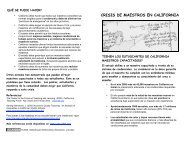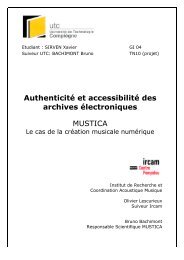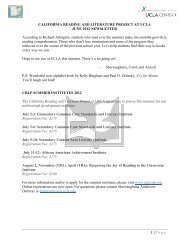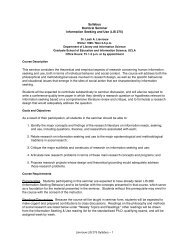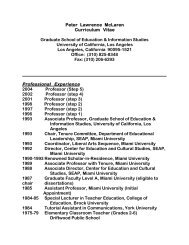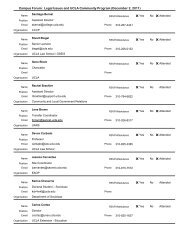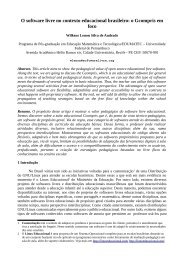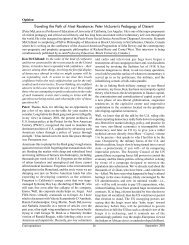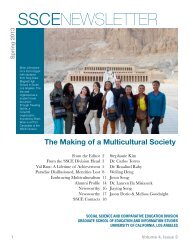1.1 From Digital Humanities to Speculative Computing - UCLA ...
1.1 From Digital Humanities to Speculative Computing - UCLA ...
1.1 From Digital Humanities to Speculative Computing - UCLA ...
Create successful ePaper yourself
Turn your PDF publications into a flip-book with our unique Google optimized e-Paper software.
Calculation is based on numerical information and the ability <strong>to</strong> perform certain<br />
functions that can be readily au<strong>to</strong>mated through mechanical and digital means.<br />
Calculation is limited by its inability <strong>to</strong> represent any content other than quantitative<br />
values. Charles Babbage’s 19 th century devices, calcula<strong>to</strong>rs, and office machines are not<br />
computers, only au<strong>to</strong>mated calcula<strong>to</strong>rs. xlvi<br />
Computation links au<strong>to</strong>mated processing <strong>to</strong> the symbolic realm. Computation<br />
makes use of signs whose values can represent any information, even thought their ability<br />
<strong>to</strong> be manipulated through a fixed set of pro<strong>to</strong>cols is determined by a succinct formal<br />
logic. The addition of an extra level of articulation in coding symbolic values on<strong>to</strong> binary<br />
entities that could be processed electronically made the leap from au<strong>to</strong>mated calculation<br />
<strong>to</strong> computation possible. This leap disconnects semantic values (what symbols mean)<br />
from their ability <strong>to</strong> be processed (as elements in a formal system). Information, as<br />
Claude Shannon famously demonstrated, is content neutral. xlvii<br />
<strong>Digital</strong> processing enacts that logic through step-by-step algorithmic procedures,<br />
many specified by programming languages and their different functionalities and syntax.<br />
Alan Turing’s design for a universal computer transformed this basic capability in<strong>to</strong> an<br />
inexhaustible computational engine. xlviii<br />
Classification systems build a higher order linguistic signifying structure on that<br />
formal base. The use of digital surrogates (themselves digital artifacts inscribed in code)<br />
reinforces the disposition <strong>to</strong> imagine that all code-based objects are self-evident, explicit,<br />
and unambiguous. Schemes for nomenclature and organization come out of library<br />
sciences and information management, as well as long traditions of typologies developed<br />
in the encyclopedic and lexicographic traditions across the sciences and humanities. xlix<br />
<strong>1.1</strong> His<strong>to</strong>ry / 3/2008 /<br />
49


